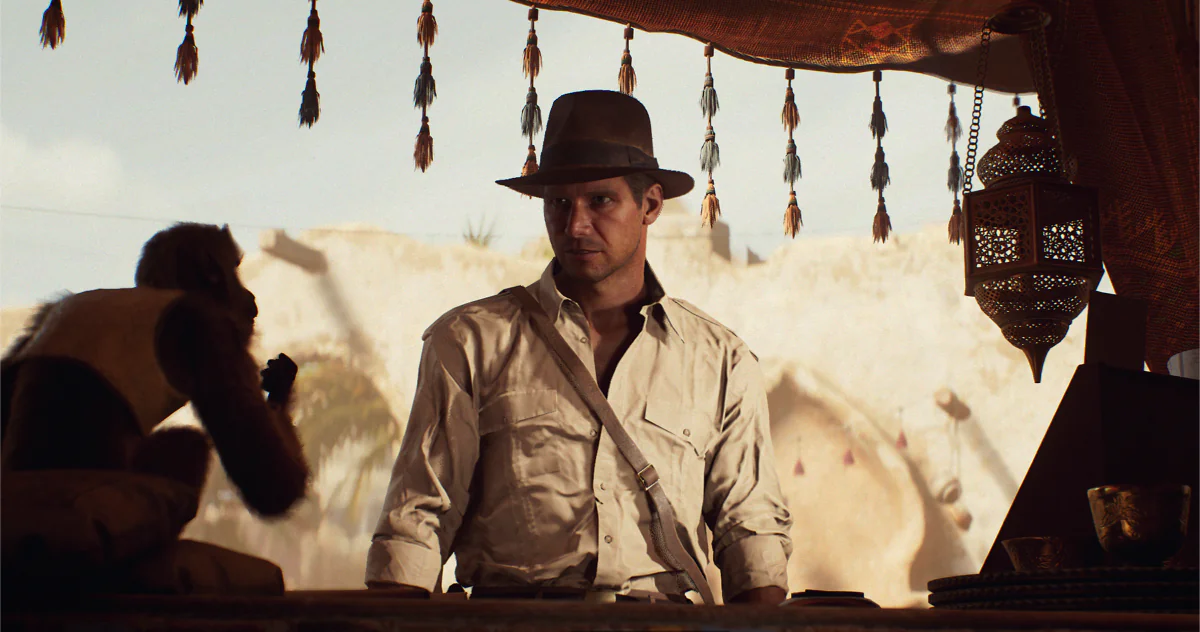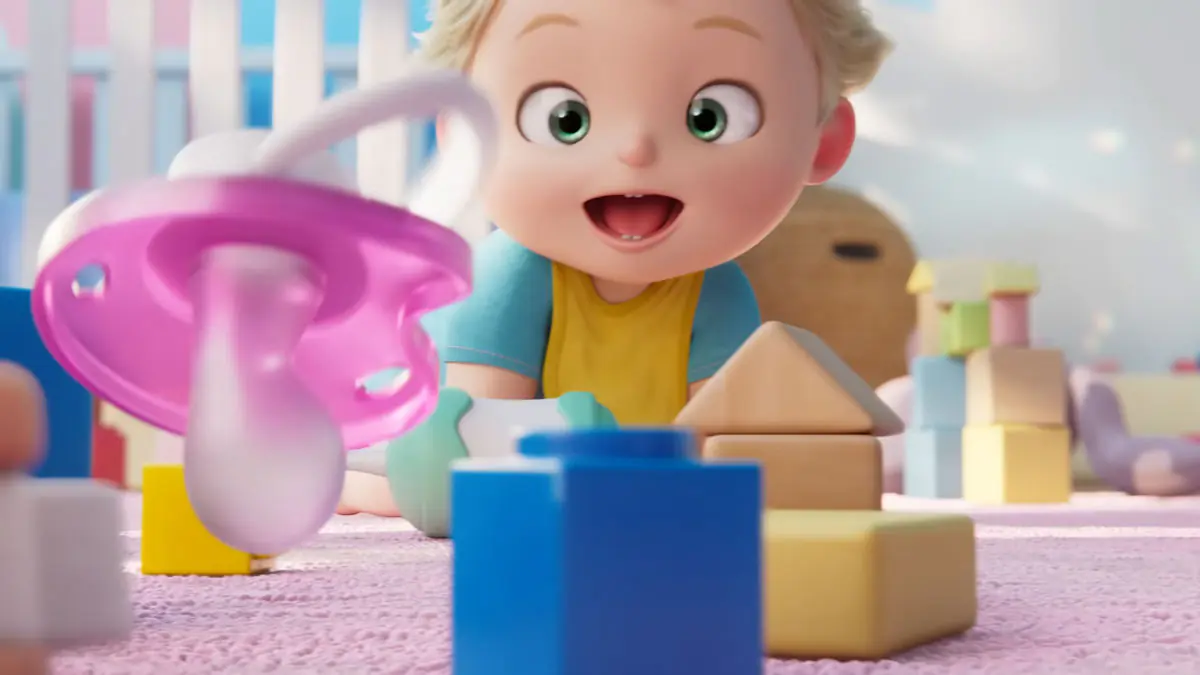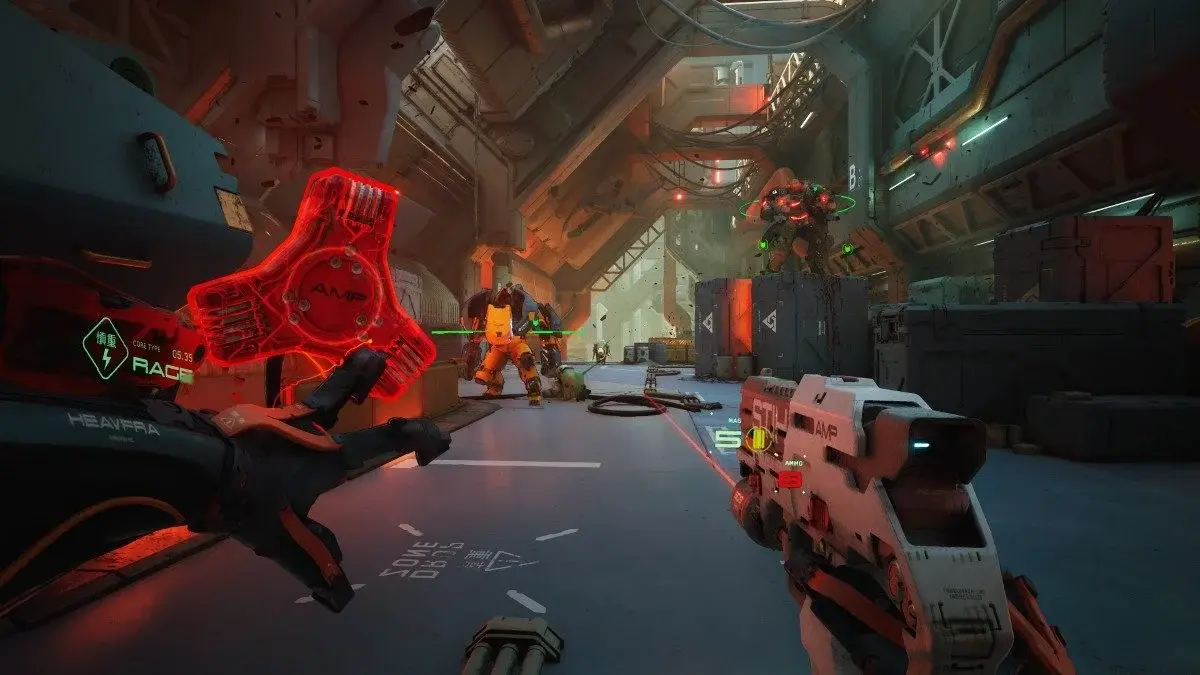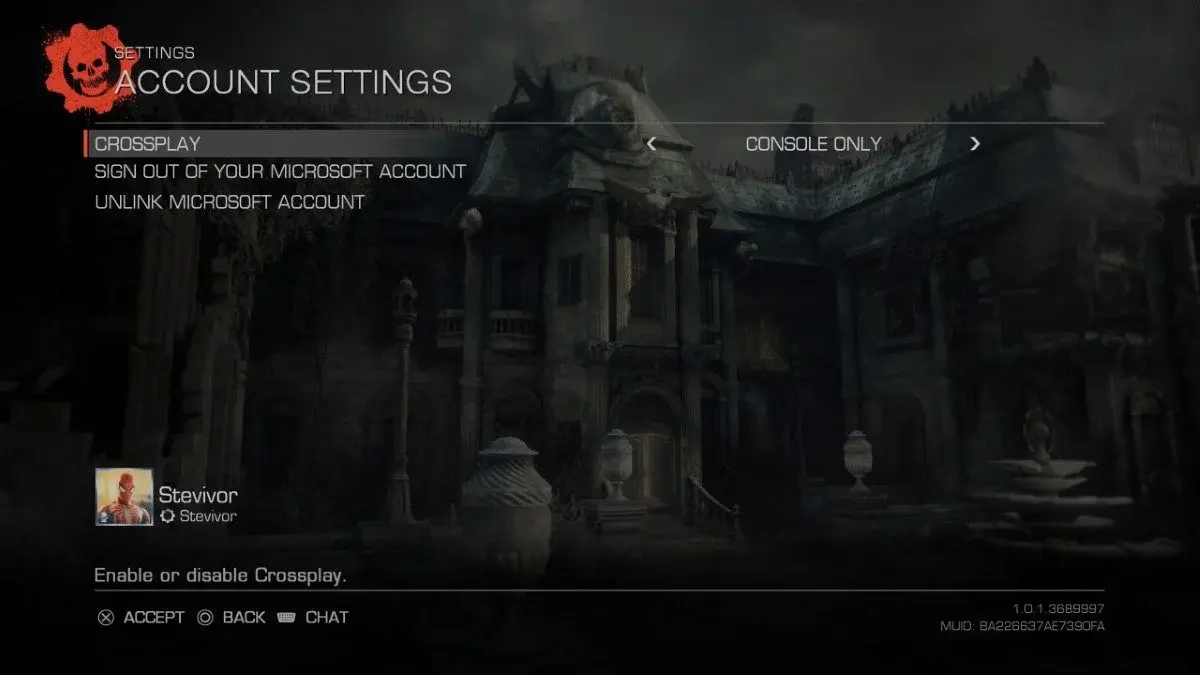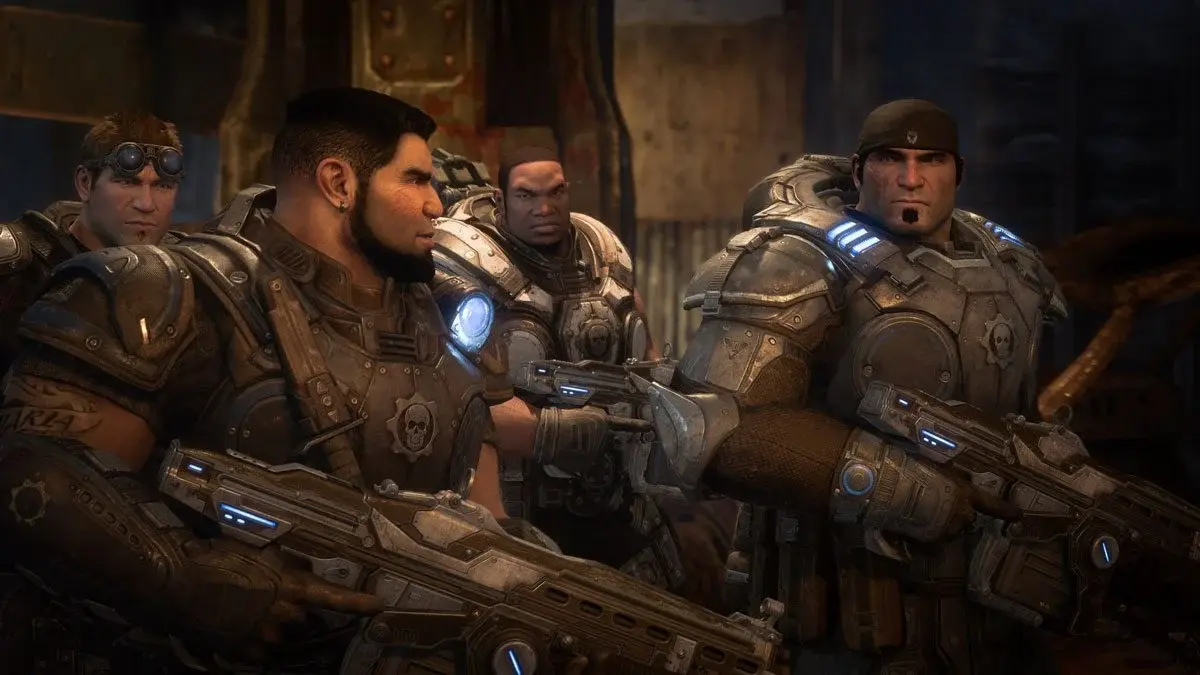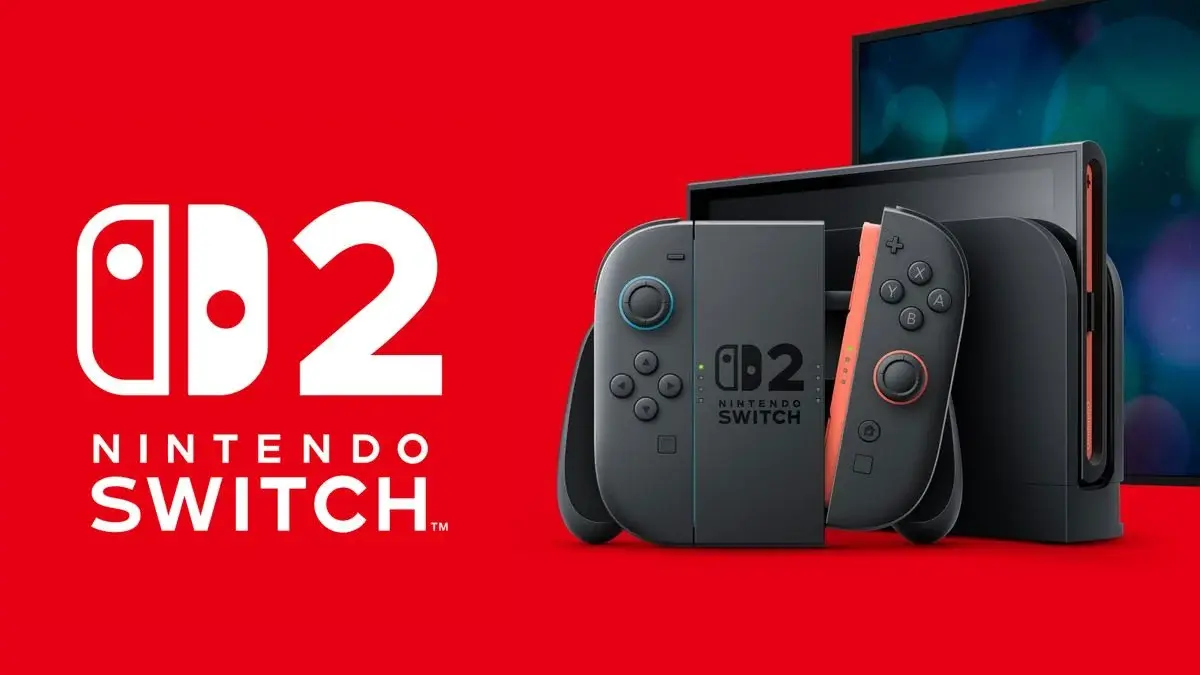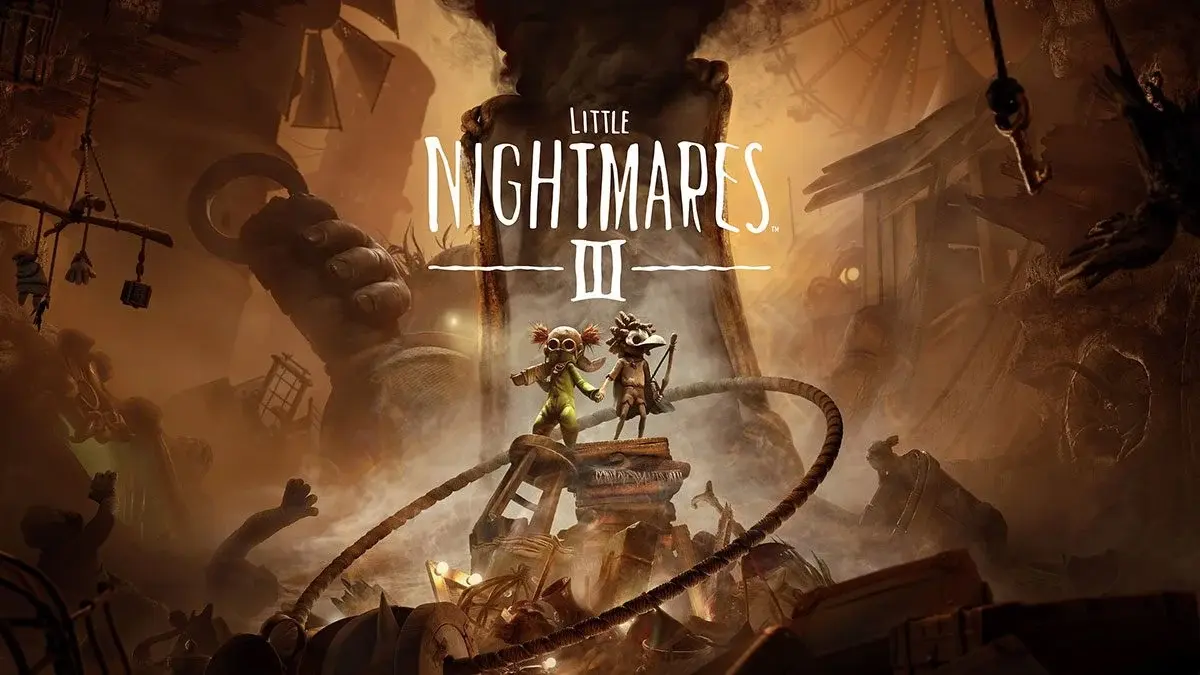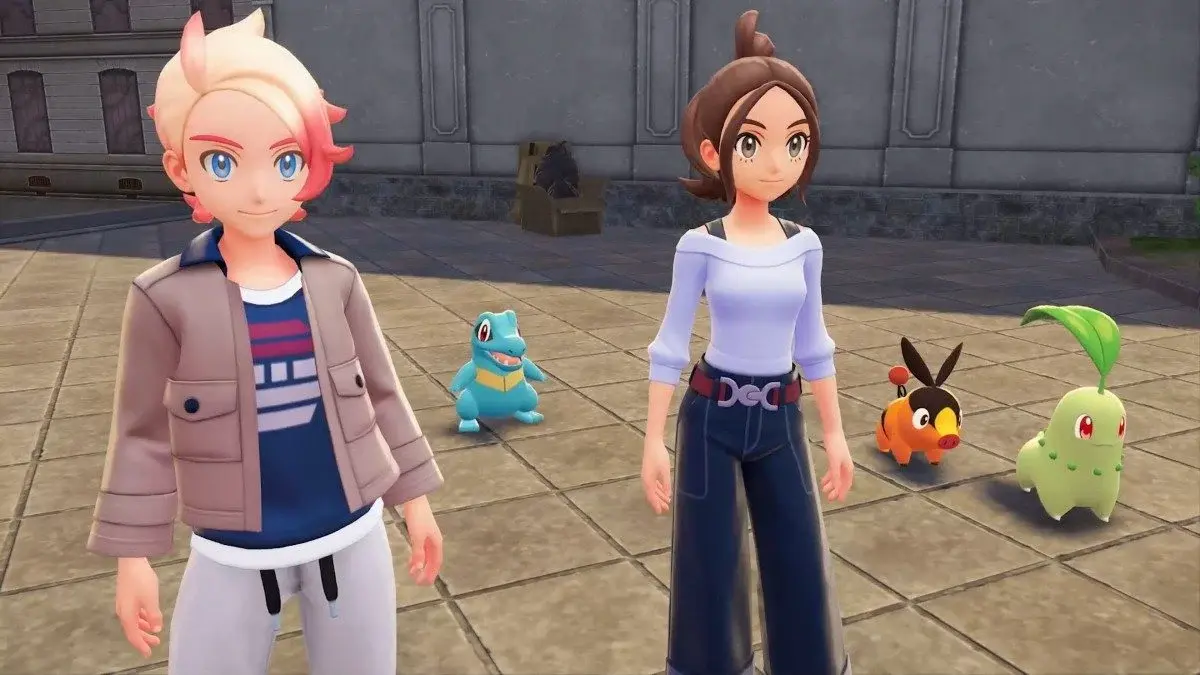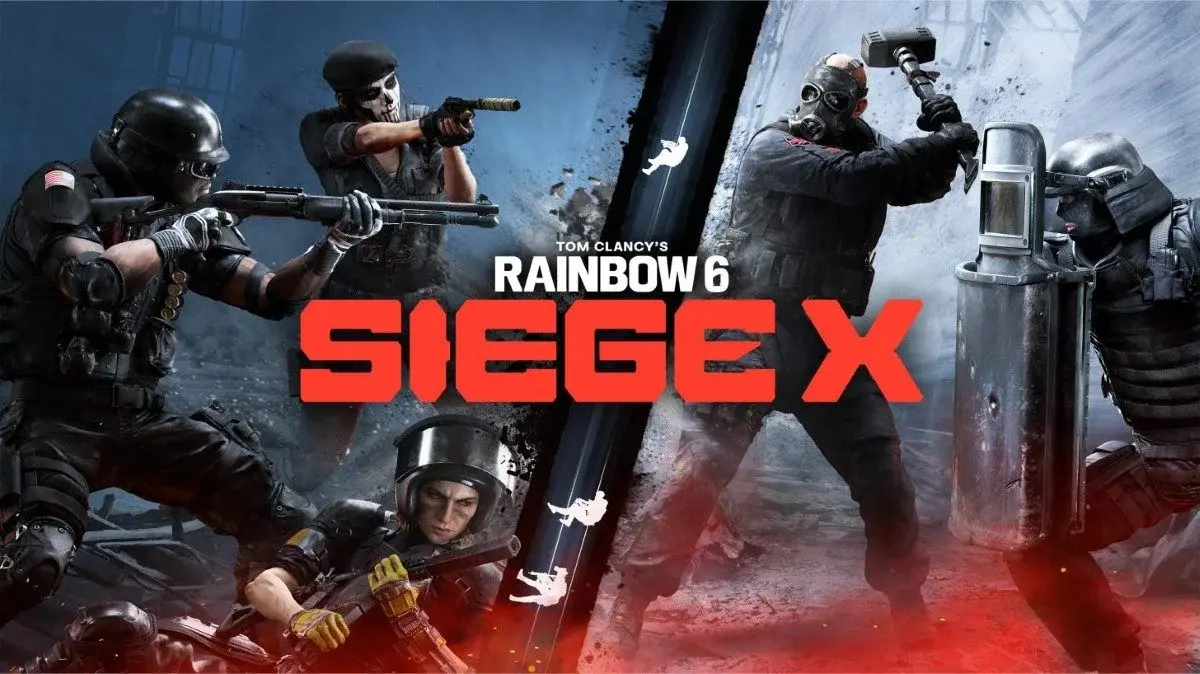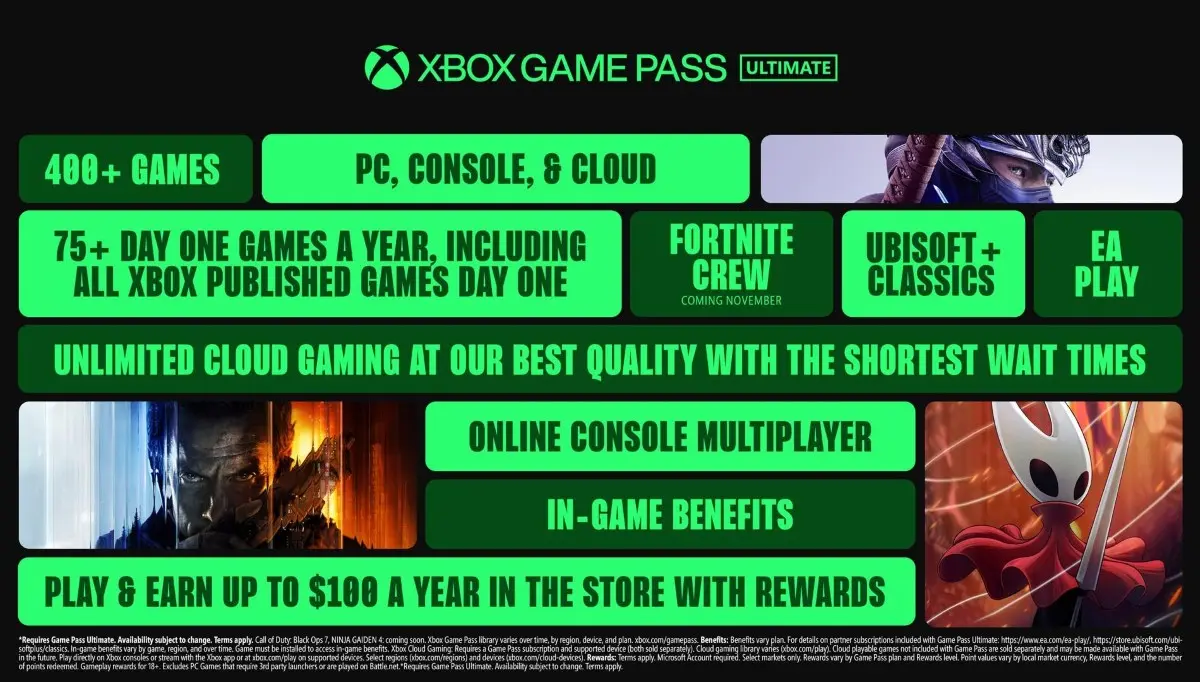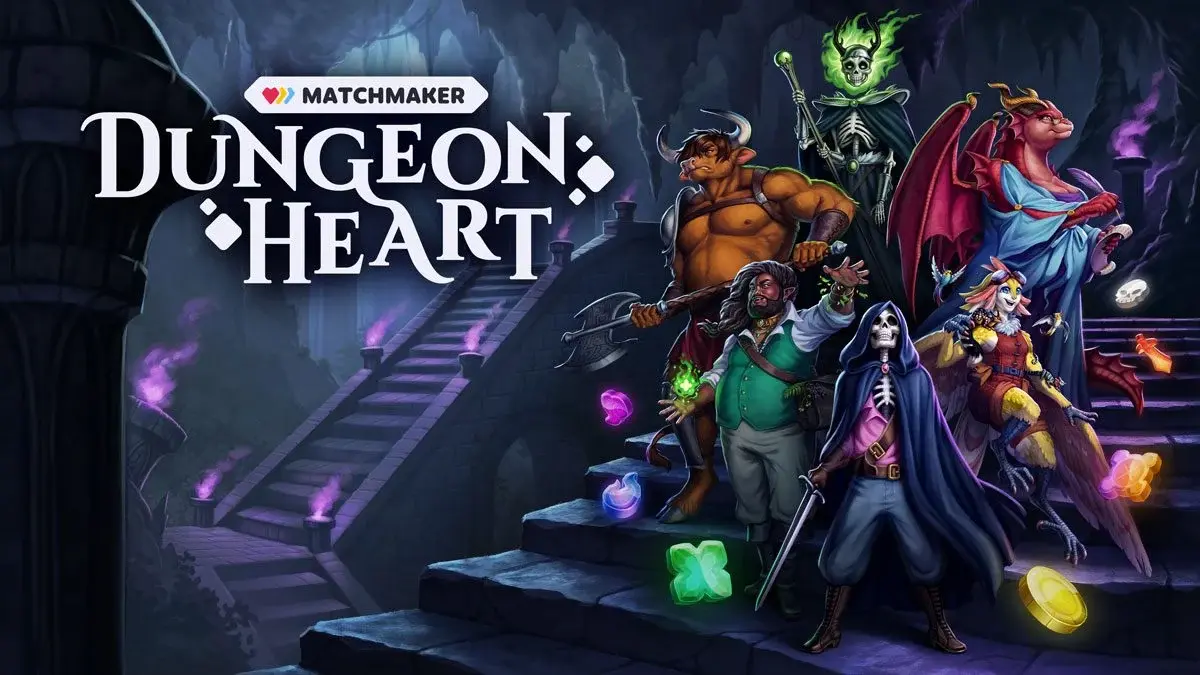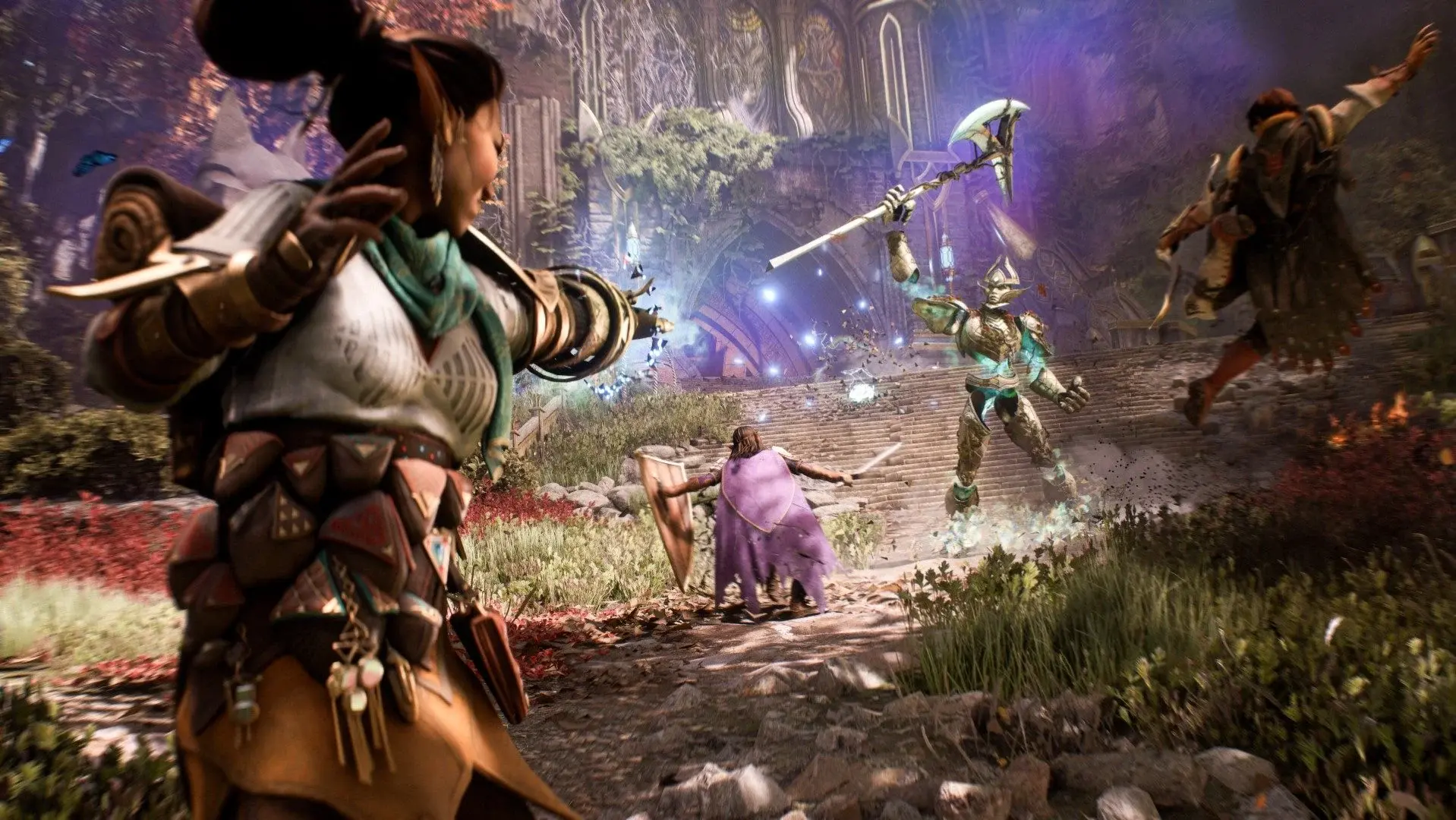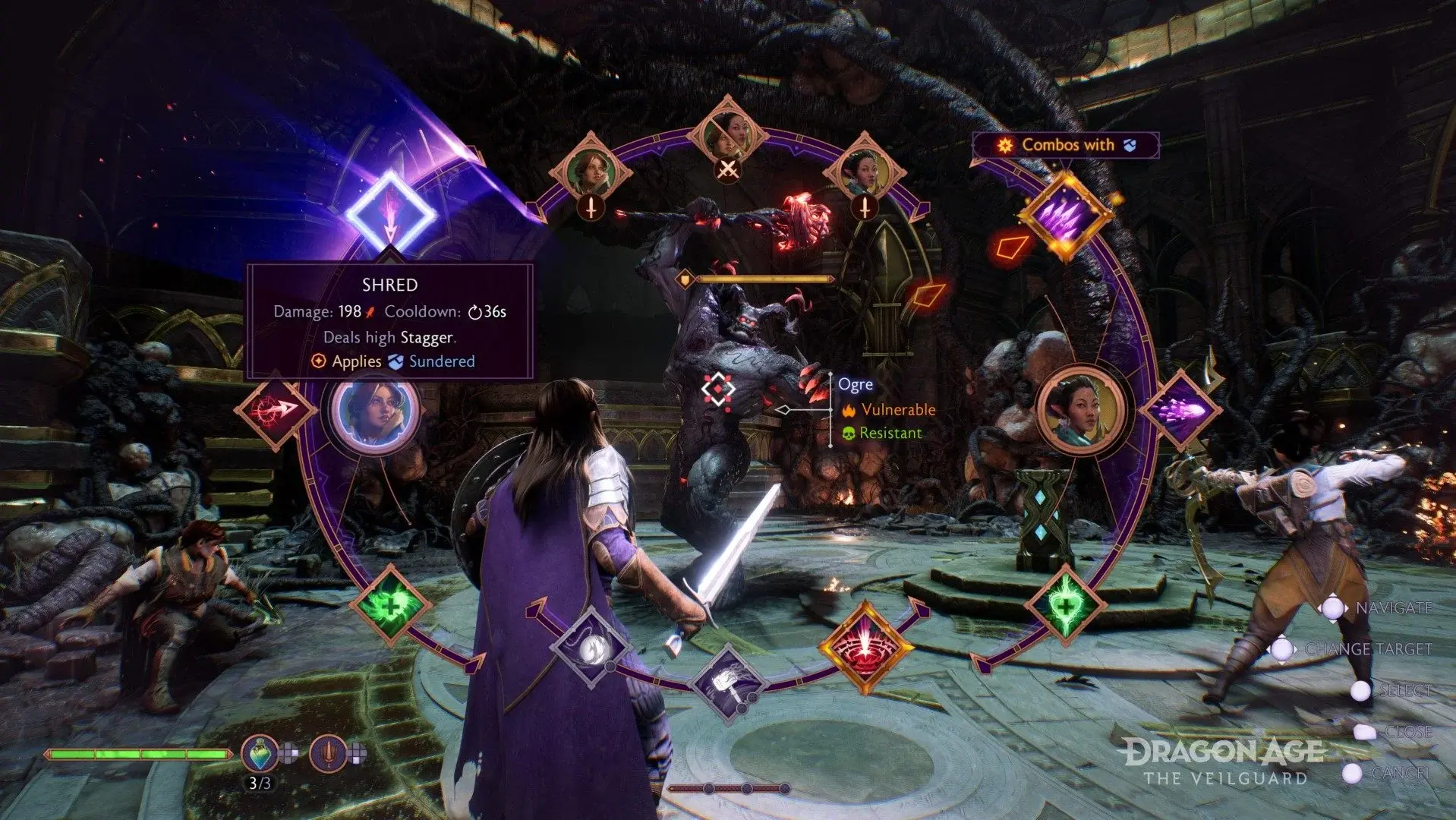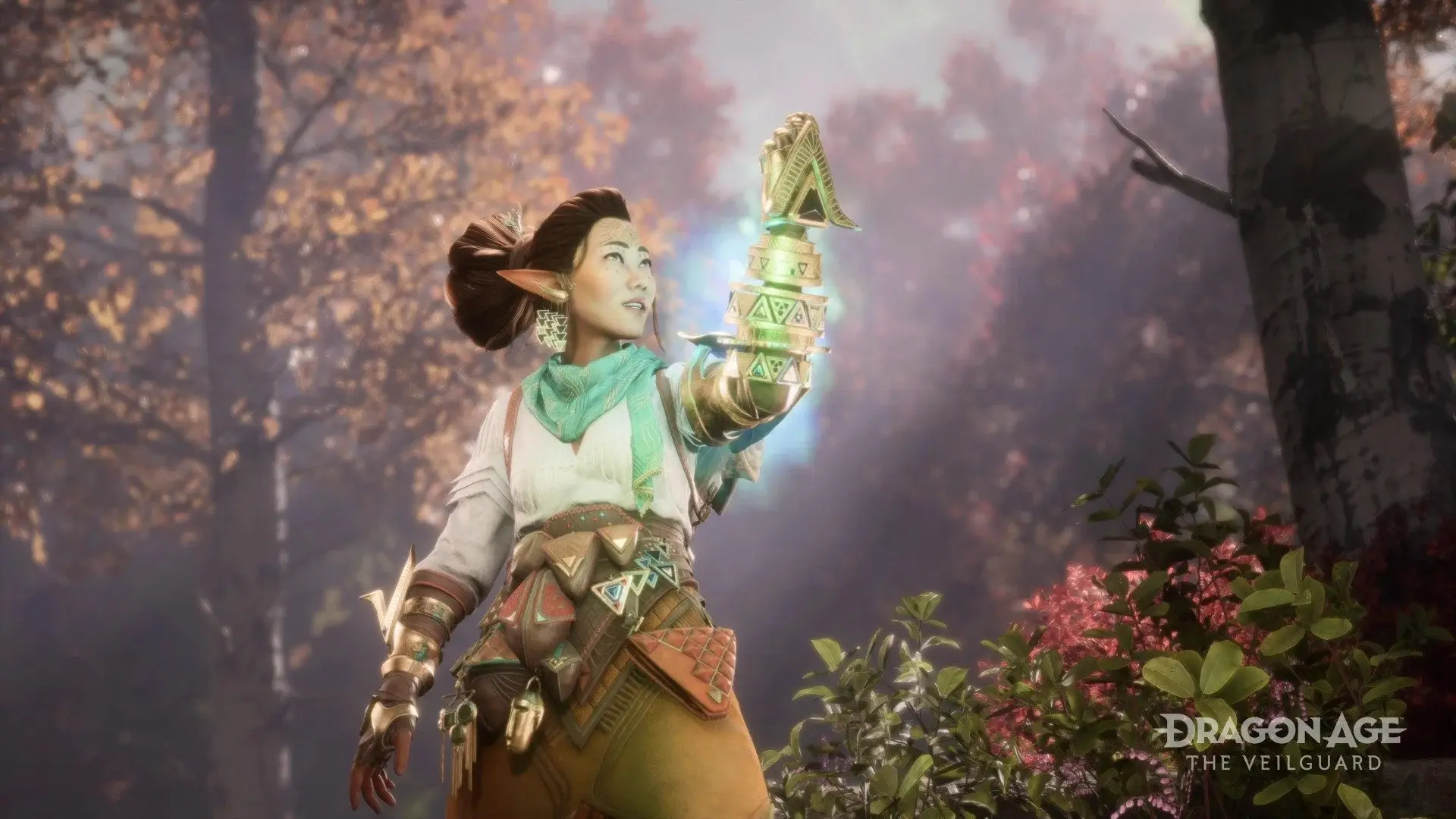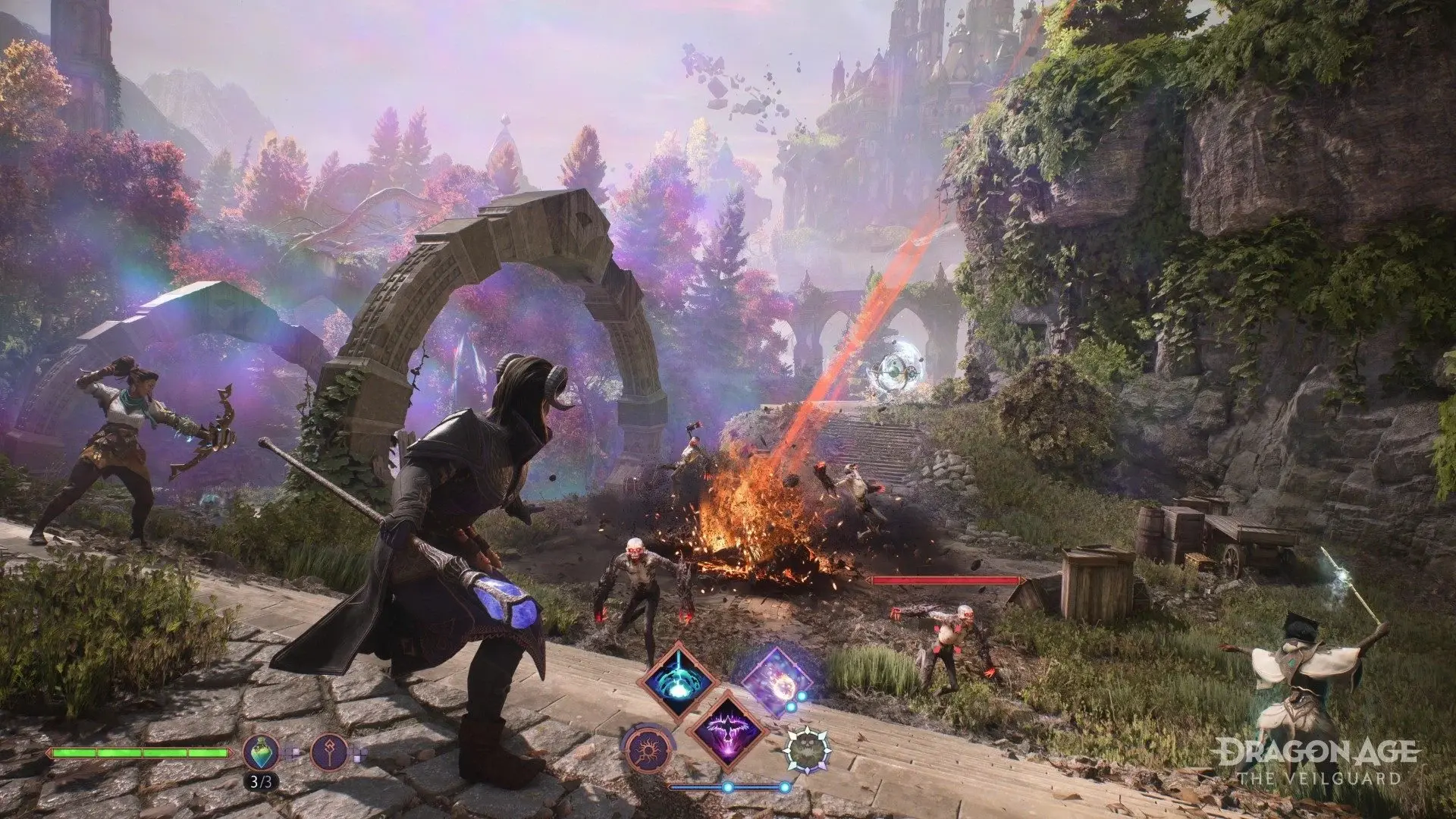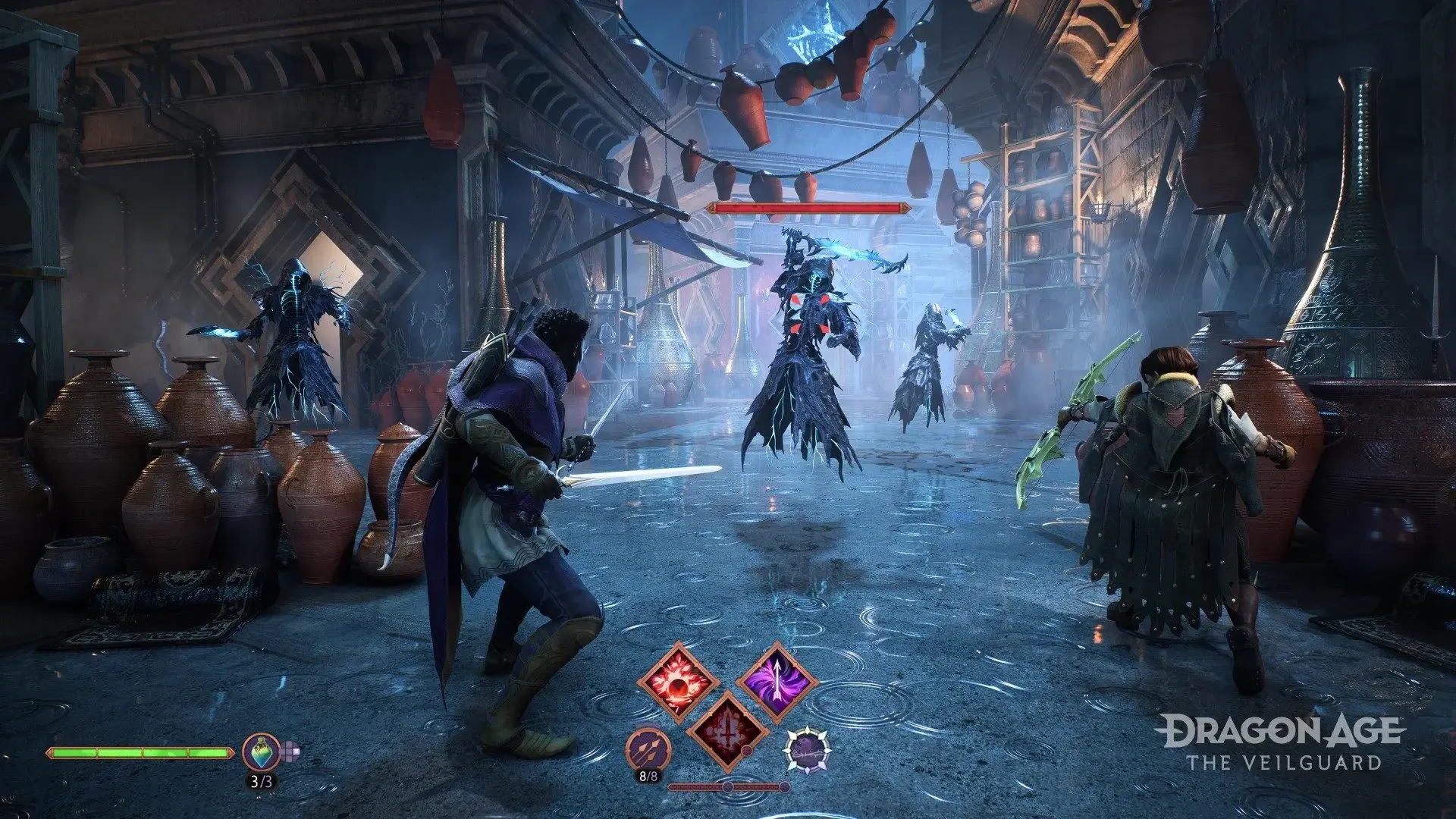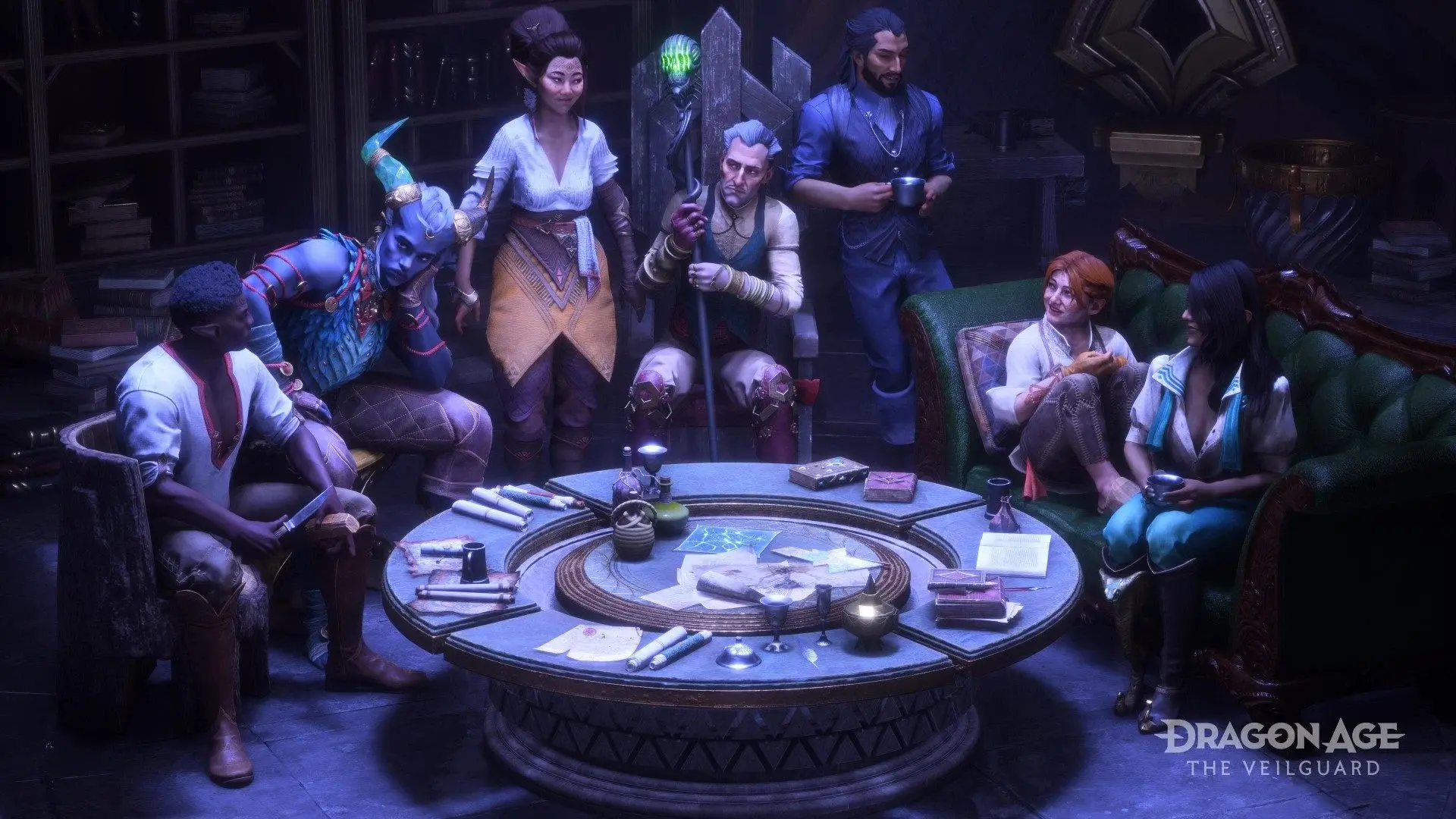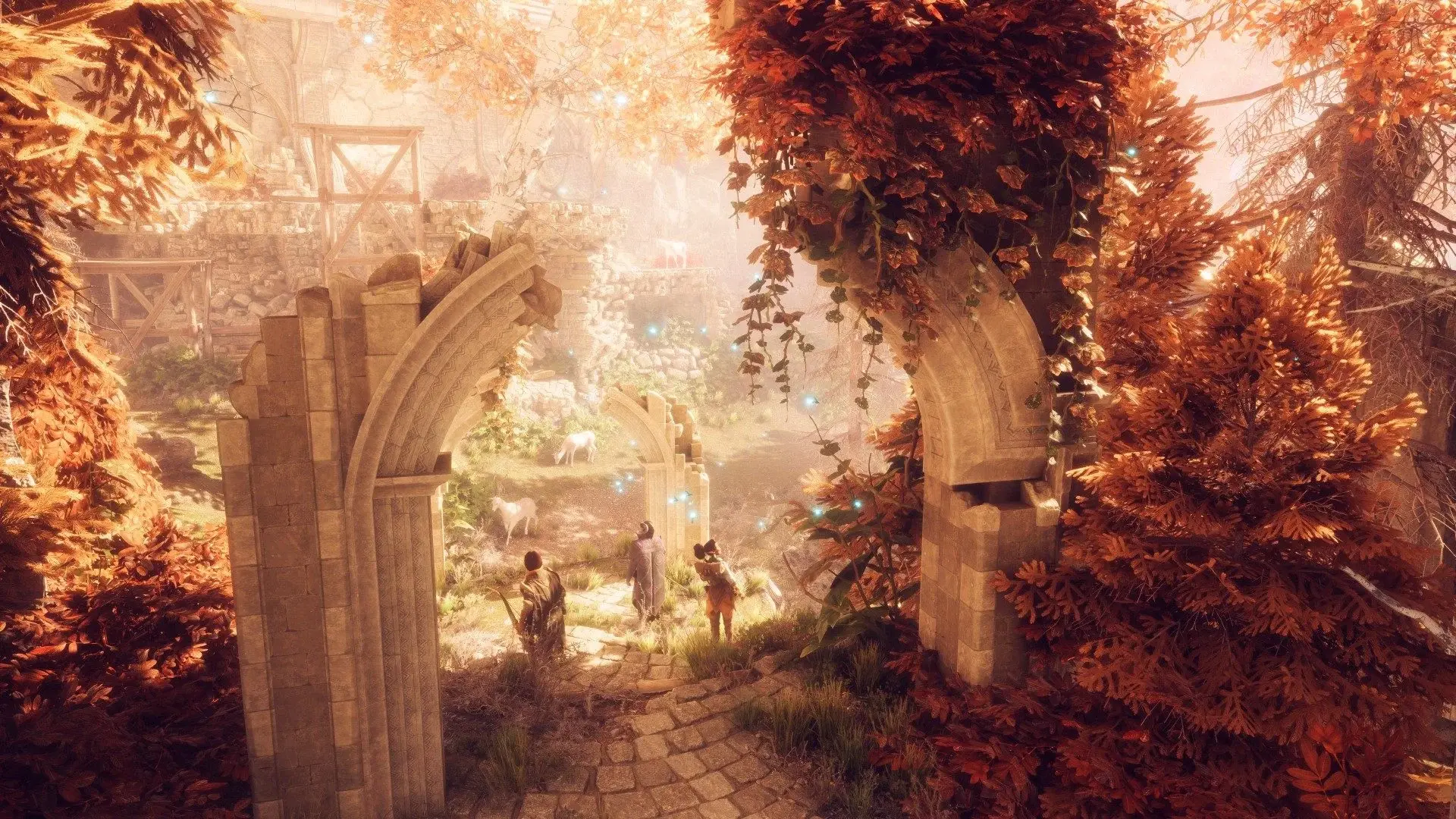BioWare’s back.
It’s easy to see Dragon Age The Veilguard as a make-or-break moment for BioWare. For a long time, the studio was known known as the go-to studio for RPGs, with huge titles like Mass Effect, Baldur’s Gate 2 and Knights of the Old Republic under their belts. It’s been a rough few years since then though, and many would have us believe that the studio is on the ropes. So, is Veilguard a victorious recovery? Let’s find out.
Veilguard takes place 10 in-game years after the events of Dragon Age Inquisition, and many of the events that shaped that story are just that: a distant story. While you’ve traditionally been able to carry over many of your decisions from previous entries, Veilguard bucks that trend and instead offers a couple of high-level decisions to bring forward.
This will undoubtedly be disappointing for series die-hards, but leaving the past behind has two major benefits: it shifts focus to the future for all players, and frees BioWare to tell a story that is unshackled by those past choices. Keep in mind that it’s also been 10 real-life years since the last Dragon Age instalment and the franchise now needs to win over a whole new audience.
This time around you’re planted in the boots of Rook, a recent recruit to the team in search of a former Inquisition companion: Solas. Spoiler alert: the character made a dramatic heel-turn at the end of Inquisition and was revealed to be largely behind the events of that game. Now, 10 years later, he’s attempting to tear open the Veil that separates the world of Thedas from that of Spirits, Demons and other Not Very Nice Things.
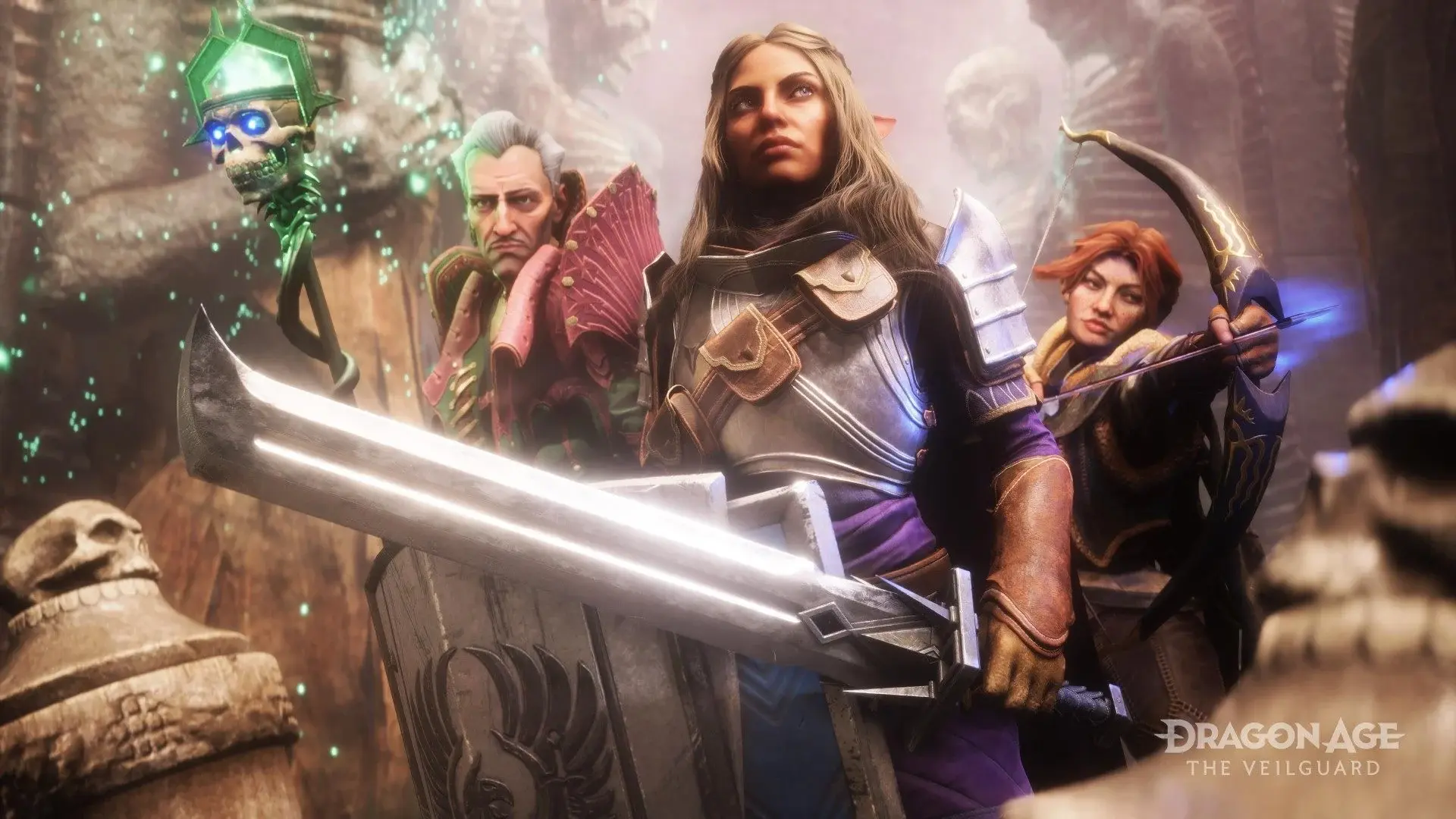
Naturally the choice of just who, and what, Rook is rests entirely with you. Is Rook a long-eared Elf, reckoning with the chaos others are threatening to unleash? A magicless Dwarf or a towering Qunari. Maybe they’re even a boring old Human, but that choice is entirely yours.
There are plenty of sliders and different style options available for those inclined, though if you’re like me and like to experiment broadly you’ll very quickly run into a major flaw: there’s no option to save a customised preset to come back to later if you want to try out different lineages. Imagine my dismay when, after 45 minutes of tweaking a Dwarf, I decided that they looked a bit silly and resolved to try making an elf instead.
Navigating back through the menus I was confronted with a warning – if I want to change lineage I would need to abandon all of my customisation to the aether. And just like that, 45 minutes of work was gone, and all because there’s no choice to save my own preset in amongst those BioWare has on offer. I played it safe the second time around and opted for an Elf; while I wasn’t super happy with how they looked either, I’d had enough at this point.
Once I had Rook’s look down, it was time to choose who I was. There are six separate factions on offer in Veilguard, and each of those six has their own backstory, perks, and potential influential dialogue options. I’d rolled my Rook as an Elf so the logical choice was the Veil Jumpers – a group of explorers digging around in ancient Elven Ruins deep within Arlathan Forest. It also helped that their faction perk, which offered a bit more crit damage, seemed to be the most optimal choice for the class and specialisation I wanted.
As in previous entries, Veilguard has three of the classic fantasy classes on offer: the bold and brash Warrior, the spellslinging Mage, and the fast and agile Rogue. Choosing one of these locks you into that class for the rest of your playthrough, though you’re not locked into a particular playstyle. Even though the Warrior is ostensibly a sword and board class, it still offers a specialization that focusses more on ability damage. Then there’s the Mage — a class you would usually expect to only play from range — but spec towards the Spellblade and you’ll get a close combat class that rivals the others when it comes to close-quarters lethality.
There was a time, many moons ago (probably about the time the last Dragon Age came out, actually) when I was younger and edgier. In those times I would always opt for the Rogue — there’s something about that dark and mysterious class, combined with the borderline compulsory sneak archer builds — that really appealed to me. Sometime between now and then, that’s changed.
Gone is my desire for sneaky, bow and dagger combat; what replaced it is the urge — no, the desire — to hit everything I could with the biggest, sharpest, most beserk-esque slab of metal I could find. With that in mind, it should come as no surprise that my Rook was a Warrior. Not just any warrior — a Slayer.
The Warrior class has three specialisations: the Champion, a standard Tank class; the Reaper, a more ability focussed playstyle; and finally, there’s the Slayer. Unbound from petty distractions like “caring for your teammates” and “managing a resource”, the Slayer instead loves one thing and one thing only: hitting stuff. Hard. And repeatedly, if necessary.
It speaks to both the care and design expertise of BioWare that it is able to provide such distinct and customisable combat experiences for the three classes. It means that no class ever truly misses out or is left behind in a particular fight. There’s always a way to make it work, even if it means changing gear or shuffling some skill points around to make it happen. With all of that chosen, it’s finally time to get out there and hit stuff.
Combat in Veilguard represents somewhat of a departure from previous titles, veering into the territory of a modern action RPG. The influence from games like God of War is clear, but in spite of that Dragon Age hasn’t lost its core identity as a party-based RPG. Your feet remain firmly planted in Rook’s shoes — there’s no switching to other characters mid-fight – alongside an increased focus on your own basic attacks and the more grandiose abilities.
Take the Warrior for example: they gain access to both one-handed plus shield and two-handed attack options, and can freely change between them even when knee deep in Darkspawn. There are light attacks, heavy attacks, charged attacks and longer combos that you can chain together to beat back foes with a satisfying crunch.
Just what gear you choose to bring can have a surprisingly large impact too. Axes are faster and do more damage, but Swords and Mauls offer substantially more Stagger – crucial for unleashing heavy Takedowns.
All of these combat options come together to create a fluid and oftentimes spectacular experience. I’ll never forget the first time my Rook launched into a double-handed overhead-swinging leap before crashing her great axe into the skulls of some unlucky enemies.
That’s not to say that we’ve lost the ability to dole out instructions though, thanks to the Ability Wheel. A quick tap of this during combat will pause the fray, allowing you both a moment to breathe and a moment to queue up and combo ally abilities. Like many other BioWare titles, Veilguard uses primer and detonator systems to great effect.
Some, but not all, of your abilities will either have a primer effect they can apply, such as Weakened, Overwhelm or Sundered, or the ability to detonate one of those status effects for extra damage. Making good use of these systems is essential for getting through some tough fights. Detonations offer you both a sizeable chunk of damage as well as a window of slowed time to get some extra hits in, apply some other status effects, or even get in a cheeky heal.
There’s, unfortunately, a bit of jank in the mix. The lock-on system for enemies is very, very sensitive and can often lead to you swinging at someone across the room rather than your intended target — and you’ll usually take a heavy hit as a result. While casting an ability provides you with some welcome i-frames, the wonky targeting can cause things to go astray and, in some cases, even hit enemies behind you instead of whoever you’re locked on to.
In lockstep with the combat system is the gearing system, with Veilguard offering one of the most novel takes on RPG gearing I can recall for some time. You see, there are two paths to levelling up gear. The first is the traditional “smithing” type upgrade that adds a level to the gear and somewhat improve the items base stats. The other happens when you find a duplicate of the item – rather than just being vendor fodder, the new piece is consumed to increase the originals rarity level and unlock a new perk. I’m certain someone out there will say X or Y game does this, but it’s the first time I’ve seen it, and I really like it.
However, that reliance on duplicates is also one of the greatest weaknesses of the gearing system. While great on paper, you can usually only easily find 1 or 2 duplicates of any given piece of gear. Once those are found you can quickly become blocked for hours and hours with a decent piece of gear that is tantalisingly close to being great.
It’s not all fists and fights though, this is a BioWare RPG after all. Veilguard’s ensemble cast is full of faces both old and new for Rook to meet, flirt and otherwise fraternise with. Romance is, of course, always on the table and you’re guaranteed to find someone in amongst your seven new friends to get to know on a more ahhh… personal level.
Each of these seven has their own stories, chock full of motivations and choices to make along the way, though it’s very hard to talk about any of that too deeply without spoiling some poignant moments. Suffice to say though that BioWare has struck an odd middle ground with their characters. It feels like they really want to swing big and tell some deep, touching and unconventional stories, but a suit somewhere has decided that poses too much of a business risk for a studio firmly on the back foot.
That’s to say nothing of the hate mobs already rumbling around the darker corners of the internet. These frothing capital-G Gamers are praying for the downfall of the once revered studio for committing the cardinal sin of being inclusive, and it seems they’ve got their way to some degree. I can’t help but feel that Veilguard has pulled its punches in a few big story beats. Instead of committing to bringing something interesting they’ve half-baked it, to the detriment of everyone.
It’s not all bad though, and while there are 2 characters I firmly do not like or appreciate the stories of I’m pleased to say that the other 5 range from a joy to a riot. Of those, two in particular stand out for me: Neve Gallus, the Shadow Dragon frost mage, and Lucanis Dellamorte, an assassin of the Antivan Crows.
When venturing out you’ll select two of your crew to join you and there’s hardly a mission I didn’t bring these two on. There’s an amusing dichotomy between a mage and a mage-killer, and hearing these two chirp at each other while running around Thedas gave me a chuckle more than once – even if I’ve heard all of their lines a hundred times by now.
When it comes to discussing the plot and storytelling of a BioWare game, where does one even begin? There’s so much going on here, from small snippets from the past that are expanded on through to huge, world changing revelations. Unfortunately, the writing quality also swings about as wildly. To be clear, most of the plot and overarching story is rock solid. It’s intriguing, captivating and it was able to keep me engaged along the way. None of the twists or turns along the way were actually that surprising, but even so they were enjoyable to experience.
The real issues arise in some of the character quests, as well as an unhealthy chunk of the dialogue. Character interactions too often feel cheesy. Whether you’re picking the Joke, Positive or any of the other available dialogue options, too often it falls flat. The Marvel movie experience is strong here, and more than once I felt like I was rewatching a Guardians of the Galaxy movie rather than the latest BioWare RPG. This isn’t always a bad thing either, but it just feels like the quality of the writing isn’t quite up to par with what I’d expect.
Veilguard does commit two big sins though, one of which I’ve alluded too (and can’t say any more) already. The other is that so many of the lines, the interactions, the very connections that Rook forms with others are written as if they were throwaways. For me, a well-crafted RPG makes every word, every dialogue option and every choice you make along the way feel like it means something. Here, though, are just too many wasted words and heartless lines.
It’s a real shame too. The story is good! The characters are, largely, very good! It just feels like the care that is present in so much of the game is absent in some of these crucial side moments. I’m sure that some of this is due to the development hell that the game seems to have gone through, and maybe BioWare is held to a different standard here than other games.
The more seasoned gamers among us may recall that Dragon Age 2 was quite heavily criticised for a lack of environmental diversity by virtue of being set largely in the city-state of Kirkwall. That was addressed in the open world of Inquisition, sure, but Veilguard? That’s where it really shines. Arlathan Forest, one of the first areas you find, is a stunning place – all warm and vibrant colours. Overgrown Elven ruins are jumbled in with huge trees, spectacular waterfalls and shimmering magic. It stands in stark contrast to some of the later areas you find: bustling cities (in both classic fantasy and overtly Italian flavours), overgrown swamps, and shifting necropoli. Each area feels truly its own, and fully alive (or dead, as it were). There may be only a handful of different environments, but they never overstay their welcome and each feels lovingly crafted.
Sadly, this doesn’t quite extend to the player character or your armour choices, though some of that is undoubtedly down to Dragon Ages art style choices. Some armour sets are well put together ensembles with a variety of visually appealing pizazz. Others though? Flat blocks, with odd colours that never quite sit right. While you can change the way any given piece of armour looks, I think that defeats the point – why would there be all of this armour in the game if I’m just going to overwrite it my “fashion”?
Speaking of visuals, I’m pleased to report that, on PS5 at least, performance was never a serious issue. Playing on the fidelity – the graphically intensive option – did stretch the legs a little bit too far for my old PS5 to handle, but thankfully the performance preset was plenty good enough without any real visual sacrifice. It’s entirely possible that my previous complaint about clothing is entirely down to the choice to play on Performance mode, though I think there’s something slightly more foundational at play there.
Perhaps the greatest kindest offered to me, personally, by Dragon Age The Veilguard is both the realisation that I don’t actually dislike long form, large scale RPGS. I’d long assumed that the rapid-fire feedback loops of shooters and MOBAs had fried what little attention span I had left for the hefty adventures on offer in titles like this. That’s patently false though, as it turns out.
Instead, it’s the homogenisation of open world RPGs that had done me in. A cursory glance around the genre and you’ll see that it’s awash with games jammed so full of stuff to do that it becomes overwhelming. An advanced degree is required to interpret the jumble of symbols repeated ad nauseum across in game maps as developers vie for your precious attention span. Not so in Veilguard.
Don’t get me wrong, there’s plenty do here. Quests to complete. Nooks and crannies to explore. Chests to open and gear to find. The map doesn’t flood you with it though, and it doesn’t give you access to all of it at once. Some places are only accessible after a quest in the area, others require a companion ability you may not have yet. The sheer level of care, the attention to detail in this experience is exceptional. Exploration is sublimely paced, dangling the hook just enough without drowning you.
Dragon Age The Veilguard is the epitome of “better than the sum of its parts”. The writing flits between top-notch, heartstring-pulling, edge-of-your-seat moments to bland throwaway filler. The combat is broadly well-designed and stringing together combos is rewarding, but some encounters and enemy types are tedious and unfun. The characters are a mixed bag, but the world as a whole is enjoyable and I want to spend time there.
On paper this feels like the recipe for a pretty average experience, but it’s not. Veilguard is not just a good game, it’s a genuinely great one. The 40 hours I ploughed into it were not just driven by a desire to get to its conclusion — I properly enjoyed the time I spent (and in a week, no less!); even now I want to dive back into Rook’s boots.
It’s been so long since I experienced this level of joy in a long-form RPG; I have a compulsion to keep playing and finish one more quest. While I don’t think Dragon Age has cured me of my recent aversion to grand RPGs, it’s helped me realise that it’s not the genre but the increasing homogenisation of the genre’s gameplay loop that has sucked the joy out of it.
Bravo, BioWare, you’ve made an absolute banger.
Dragon Age The Veilguard was reviewed using a promotional code on PS5, as provided by the publisher. Click here to learn more about Stevivor’s scoring scale.
 |
Dragon Age The Veilguard31 October 2024PC PS5 Xbox Series S & X
|
This article may contain affiliate links, meaning we could earn a small commission if you click-through and make a purchase. Stevivor is an independent outlet and our journalism is in no way influenced by any advertiser or commercial initiative.

